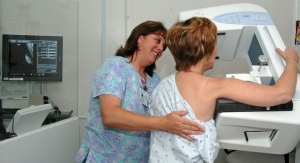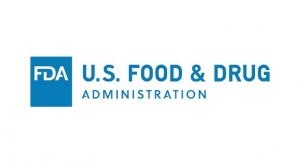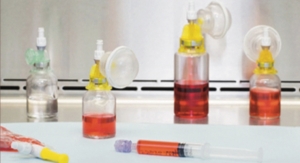Tony Parise, Product Strategist—Life Sciences, ETQ04.03.19
Increasing numbers of companies are investing in digital transformation to gain a competitive edge, with digitization set to more than double among manufacturers since 2016 according to Forbes. It’s all part of a rapid technological acceleration termed Industry 4.0—the fourth industrial revolution—focused on process automation tools like machine learning and artificial intelligence.
Quality management in medical device manufacturing is prime for transformation. Many companies choose quality management system (QMS) software to automate processes, minimize variation, and improve quality and safety. The market is currently undergoing a major expansion, with revenues growing over 30 percent in 2017, according to a Gartner report.
Manufacturers have plenty of options among QMS vendors, but making the wrong choice is risky. Delays, lack of buy-in, inadequate functionality—all can lead to failed implementation totaling millions of dollars in wasted investment and productivity. Assembling the right team to ask the right questions while gathering requirements is key to avoiding these problems. Manufacturers should focus on areas like process capabilities, integration, user experience, scalability, reporting analytics, hosting options, and vendor experience.
1) Critical Processes—The first consideration is determining which quality processes to automate. Gartner’s report highlights several of the most important in a QMS solution, including:
2) Flexibility—Look for software flexible enough to adapt to internal processes. If forced to change processes to accommodate the software’s limitations, you won’t be able to achieve the process efficiency required for true digital transformation. Operational excellence demands continuous process refinement and improvement, which can’t be done if the QMS hamstrings you.
Some search for a QMS to find software to drive quality processes. While this may seem like a good idea without standardized processes in place, in the long run it will hamstring you and inhibit goals. Take new product introduction—you need the ability to update how you characterize new medical devices as you develop them. Each device may have its own defect types, processes, or other characteristics requiring quality system changes for a successful launch.
Any new device will likely introduce new requirements (like new test results) that must be incorporated into a nonconformance form. A robust QMS allows a seamless way to meet your timeline without rebuilding the entire app, allowing you to build in requirements ahead of product launch; protect data integrity of records to establish data assurance; ensure compliance with U.S. Food and Drug Administration (FDA) and European Medicine Agency rules on electronic records (21 CFR Part 11 and EU Annex 11, respectively); and track and comply with international standards like ISO 9001 for quality management and ISO 13485 for quality and risk management.
Then your QMS is an agent of change, not a stumbling block. Without flexibility, information is stuck where it doesn’t belong or other concessions are made as you shoehorn new product introduction needs into the QMS’ limitations. Many manufacturers dump this information into a catchall “other” field in quality forms. This category is difficult to analyze without third-party tools, leaving risky gaps in your quality process. Auditors frequently go straight to the “other” category, often uncovering information that can impact quality, safety, and compliance.
An interesting exercise for quality leaders is to use reporting tools to extract and read information currently parked in “other” categories. With a flexible QMS, historical data can create new categories for reporting to increase visibility, mitigate risk, make better decisions, and reduce use of the “other” category.
As businesses continue to grow through M&A, a flexible QMS also allows seamlessly handling changes in activity by location. In addition, the QMS streamlines the onboarding process during M&A, presenting a major competitive advantage for manufacturers.
3) Integration—When automating your QMS for digital transformation, is the software interoperable with other systems? The QMS should be able to push and pull data from systems such as enterprise resource planning (ERP); laboratory information management system (LIMS); manufacturing execution system (MES); learning management system (LMS); production equipment; distributed control system (DCS); energy management system and battery management system (BMS); product lifecycle management (PLM) software; and supply chain management system.
Incorporating supply chain vendors into your QMS is vital, given poor supplier quality has serious safety implications. The growth of contract manufacturing underscores the need for tighter supply chain integration, an area where many companies are at risk.
Digital transformation creates a connected factory where systems communicate, improving visibility and efficiency so you’re not manually jumping between systems. For instance, your PLM system should feed the QMS with metadata, specifications, and other information from R&D. The PLM system can hold the record of order from which R&D iterate product changes, allowing easy creation and update of specifications, design inputs and outputs, design history file (DHF), device master record (DMR), device history record (DHR), and new process parameters.
Your PLM system should feed this information into QMS documentation as well as your LIMS, stemming from R&D changes. This is necessary to unlock significant advances in machine learning, artificial intelligence, and IoT. Smart sensors and equipment are capable of generating huge volumes of data; if your QMS is integrated with those systems, that data can help improve quality with near real-time information.
4) User Experience—Gartner and others highlight the importance of user experience when implementing a QMS due to its impact on user adoption. Many companies have learned the hard way that poor usability is a leading cause of failed implementations.
What should manufacturers look for here? Ultimately, it comes down to finding a system similar to what people are familiar with, containing a clean, modern interface that’s intuitive and easy to use without a lot of training; the ability to access the QMS via mobile devices; Google-style search that helps find the information they need quickly; and the ability to brand the QMS with logos and colors to match the look and feel of other internal systems.
It’s easy to focus exclusively on the technical capabilities of QMS software without asking whether the system is user-friendly. But as the saying goes, people must be choosers before they are users—if the system isn’t intuitive, they won’t choose to use it. A system that makes your team’s job easier is essential to user adoption and QMS success.
5) Saas vs. On-Premise—As you evaluate options, consider whether to deploy on-premise or cloud-based software. According to Gartner, 40 percent of QMS software is on-premise or customer-hosted in a private cloud, whereas 41 percent of deployments are cloud-based software as a service (SaaS).
Some of the reasons companies move to SaaS-based QMS software include: reduced IT burden frees resources for other digital transformation projects; faster scaling and implementation speeds time to market; lower total cost of ownership means you only pay for what you use, with no maintenance costs; always-on and updated for full reliability; enhanced security; and easy access via secure web-based login from anywhere.
Despite the advantages of a cloud-based QMS, some still prefer to stick with traditional on-premise software. Often this is due to corporate policy or security concerns, though data may be safer offsite on redundant servers managed by security experts. Other companies opt for a hybrid model that blends an on-premise private cloud with the public cloud, allowing use of the public cloud as needs fluctuate while hosting sensitive information internally.
6) Vendor Considerations—Determine whether prospective vendors can ensure successful implementation. As you talk with vendors, focus on experience they have in the medical device industry; their history of working on projects of similar size, and how have they have solved other customers’ business challenges; the vendor’s reputation around customer service (having dedicated resources when you need help can make or break an implementation); the vendor’s investment in developing and improving the software (do they rely on other proprietary platforms?); geographic presence (if you must execute a global deployment, does the vendor have a proven track record?); and customer references (have other customers solely used the vendor for implementation, or did they need to bring in consultants? What worked and what didn’t during deployment?)
7) Digital Transformation Capabilities—Gartner points out the importance of considering current and future capabilities around mobile tools, IoT, and advanced analytics. Even if you aren’t currently leveraging these technologies, a QMS that can grow in the future as you continue the digital transformation journey is essential.
Manufacturers will benefit most from a platform capable of integrating with advanced analytics, business intelligence tools, production systems, and smart sensors. Mobile tools can also unlock greater efficiencies in digital transformation. A QMS that allows you to make any application’s process mobile is key to design processes around the organization’s unique needs and business benefits.
Successful implementation ultimately comes down to a thorough analysis of quality processes and QMS requirements. Whether you opt for on-premise or cloud-based software, prioritizing elements like flexibility, integration, user experience, and vendor expertise will improve the outcome.
Anthony Parise is a product strategist for life sciences at ETQ , a Burlington, Mass.-based leading provider of quality, EHS, and compliance management software trusted by some of the world’s strongest companies to secure brand reputation, transform insight into action, and help them focus on what matters most.
Quality management in medical device manufacturing is prime for transformation. Many companies choose quality management system (QMS) software to automate processes, minimize variation, and improve quality and safety. The market is currently undergoing a major expansion, with revenues growing over 30 percent in 2017, according to a Gartner report.
Manufacturers have plenty of options among QMS vendors, but making the wrong choice is risky. Delays, lack of buy-in, inadequate functionality—all can lead to failed implementation totaling millions of dollars in wasted investment and productivity. Assembling the right team to ask the right questions while gathering requirements is key to avoiding these problems. Manufacturers should focus on areas like process capabilities, integration, user experience, scalability, reporting analytics, hosting options, and vendor experience.
1) Critical Processes—The first consideration is determining which quality processes to automate. Gartner’s report highlights several of the most important in a QMS solution, including:
- Document control to securely manage creation, revision, and distribution of controlled documents
- Corrective action to create a closed-loop workflow to fix problems quickly and effectively
- Employee training to ensure team members have the required skills, knowledge, and abilities
- Change management to assess the potential impact and reduce risk of changes to people, processes, or equipment
- Risk assessment tools including failure mode and effects analysis (FMEA) to standardize how you handle risks in the medical device Total Product Life Cycle development process
- Reporting analytics to spot quality trends and proactively ensure compliance with customer, regulatory, and standard requirements
2) Flexibility—Look for software flexible enough to adapt to internal processes. If forced to change processes to accommodate the software’s limitations, you won’t be able to achieve the process efficiency required for true digital transformation. Operational excellence demands continuous process refinement and improvement, which can’t be done if the QMS hamstrings you.
Some search for a QMS to find software to drive quality processes. While this may seem like a good idea without standardized processes in place, in the long run it will hamstring you and inhibit goals. Take new product introduction—you need the ability to update how you characterize new medical devices as you develop them. Each device may have its own defect types, processes, or other characteristics requiring quality system changes for a successful launch.
Any new device will likely introduce new requirements (like new test results) that must be incorporated into a nonconformance form. A robust QMS allows a seamless way to meet your timeline without rebuilding the entire app, allowing you to build in requirements ahead of product launch; protect data integrity of records to establish data assurance; ensure compliance with U.S. Food and Drug Administration (FDA) and European Medicine Agency rules on electronic records (21 CFR Part 11 and EU Annex 11, respectively); and track and comply with international standards like ISO 9001 for quality management and ISO 13485 for quality and risk management.
Then your QMS is an agent of change, not a stumbling block. Without flexibility, information is stuck where it doesn’t belong or other concessions are made as you shoehorn new product introduction needs into the QMS’ limitations. Many manufacturers dump this information into a catchall “other” field in quality forms. This category is difficult to analyze without third-party tools, leaving risky gaps in your quality process. Auditors frequently go straight to the “other” category, often uncovering information that can impact quality, safety, and compliance.
An interesting exercise for quality leaders is to use reporting tools to extract and read information currently parked in “other” categories. With a flexible QMS, historical data can create new categories for reporting to increase visibility, mitigate risk, make better decisions, and reduce use of the “other” category.
As businesses continue to grow through M&A, a flexible QMS also allows seamlessly handling changes in activity by location. In addition, the QMS streamlines the onboarding process during M&A, presenting a major competitive advantage for manufacturers.
3) Integration—When automating your QMS for digital transformation, is the software interoperable with other systems? The QMS should be able to push and pull data from systems such as enterprise resource planning (ERP); laboratory information management system (LIMS); manufacturing execution system (MES); learning management system (LMS); production equipment; distributed control system (DCS); energy management system and battery management system (BMS); product lifecycle management (PLM) software; and supply chain management system.
Incorporating supply chain vendors into your QMS is vital, given poor supplier quality has serious safety implications. The growth of contract manufacturing underscores the need for tighter supply chain integration, an area where many companies are at risk.
Digital transformation creates a connected factory where systems communicate, improving visibility and efficiency so you’re not manually jumping between systems. For instance, your PLM system should feed the QMS with metadata, specifications, and other information from R&D. The PLM system can hold the record of order from which R&D iterate product changes, allowing easy creation and update of specifications, design inputs and outputs, design history file (DHF), device master record (DMR), device history record (DHR), and new process parameters.
Your PLM system should feed this information into QMS documentation as well as your LIMS, stemming from R&D changes. This is necessary to unlock significant advances in machine learning, artificial intelligence, and IoT. Smart sensors and equipment are capable of generating huge volumes of data; if your QMS is integrated with those systems, that data can help improve quality with near real-time information.
4) User Experience—Gartner and others highlight the importance of user experience when implementing a QMS due to its impact on user adoption. Many companies have learned the hard way that poor usability is a leading cause of failed implementations.
What should manufacturers look for here? Ultimately, it comes down to finding a system similar to what people are familiar with, containing a clean, modern interface that’s intuitive and easy to use without a lot of training; the ability to access the QMS via mobile devices; Google-style search that helps find the information they need quickly; and the ability to brand the QMS with logos and colors to match the look and feel of other internal systems.
It’s easy to focus exclusively on the technical capabilities of QMS software without asking whether the system is user-friendly. But as the saying goes, people must be choosers before they are users—if the system isn’t intuitive, they won’t choose to use it. A system that makes your team’s job easier is essential to user adoption and QMS success.
5) Saas vs. On-Premise—As you evaluate options, consider whether to deploy on-premise or cloud-based software. According to Gartner, 40 percent of QMS software is on-premise or customer-hosted in a private cloud, whereas 41 percent of deployments are cloud-based software as a service (SaaS).
Some of the reasons companies move to SaaS-based QMS software include: reduced IT burden frees resources for other digital transformation projects; faster scaling and implementation speeds time to market; lower total cost of ownership means you only pay for what you use, with no maintenance costs; always-on and updated for full reliability; enhanced security; and easy access via secure web-based login from anywhere.
Despite the advantages of a cloud-based QMS, some still prefer to stick with traditional on-premise software. Often this is due to corporate policy or security concerns, though data may be safer offsite on redundant servers managed by security experts. Other companies opt for a hybrid model that blends an on-premise private cloud with the public cloud, allowing use of the public cloud as needs fluctuate while hosting sensitive information internally.
6) Vendor Considerations—Determine whether prospective vendors can ensure successful implementation. As you talk with vendors, focus on experience they have in the medical device industry; their history of working on projects of similar size, and how have they have solved other customers’ business challenges; the vendor’s reputation around customer service (having dedicated resources when you need help can make or break an implementation); the vendor’s investment in developing and improving the software (do they rely on other proprietary platforms?); geographic presence (if you must execute a global deployment, does the vendor have a proven track record?); and customer references (have other customers solely used the vendor for implementation, or did they need to bring in consultants? What worked and what didn’t during deployment?)
7) Digital Transformation Capabilities—Gartner points out the importance of considering current and future capabilities around mobile tools, IoT, and advanced analytics. Even if you aren’t currently leveraging these technologies, a QMS that can grow in the future as you continue the digital transformation journey is essential.
Manufacturers will benefit most from a platform capable of integrating with advanced analytics, business intelligence tools, production systems, and smart sensors. Mobile tools can also unlock greater efficiencies in digital transformation. A QMS that allows you to make any application’s process mobile is key to design processes around the organization’s unique needs and business benefits.
Successful implementation ultimately comes down to a thorough analysis of quality processes and QMS requirements. Whether you opt for on-premise or cloud-based software, prioritizing elements like flexibility, integration, user experience, and vendor expertise will improve the outcome.
Anthony Parise is a product strategist for life sciences at ETQ , a Burlington, Mass.-based leading provider of quality, EHS, and compliance management software trusted by some of the world’s strongest companies to secure brand reputation, transform insight into action, and help them focus on what matters most.




























